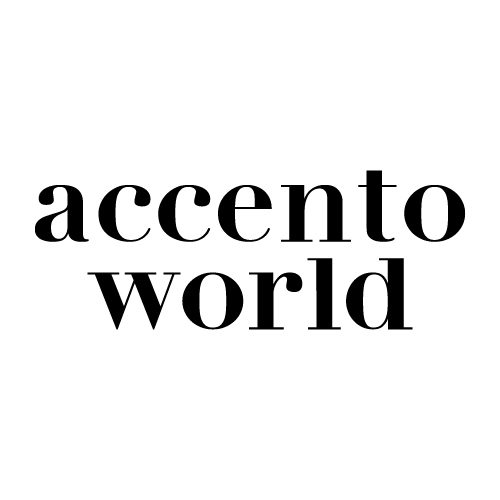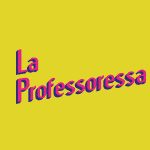Louis Guidetti

Accento
Louis Guidetti
[ENG]: A trip to Italy gave him a vision of beauty and now he wants other people to see.
[ITA]: Un viaggio in Italia gli diede una visione di bellezza e ora vuole che tutti vedano.
Interview by Alberto Larizza | Translated by Bianca Pirrelli
What’s your name?
Louis Guidetti
Where are you from?
Winston-Salem, North Carolina
When did you decide to become an artist?
In 11th grade in high school.
How did the passion for art begin?
It’s kind of a funny story because when I was young, my mom wouldn’t buy me many toys so I would always make my own by drawing things from my imagination or from the movies. I would then cut them out and play with them. I would make dragons and all sorts of creatures. I even made swords by cutting them out of cardboard, reinforcing them with chop sticks, and then wrapping them with duct tape. I used them to fight my brother with. As I matured, I eventually took a trip to Italy with my family when I was in high school where I saw the most amazing Italian sculptures and paintings. this prompted me to pursue classical realism, which I had always been drawn to.
Why did you decide to study in Italy
After my trip to Italy, I finished the 11th and 12th grade and drew the entire time in a sketchbook because of the inspiration I got from Italy. I decided to try to find a school over seas to be closer to the source of the inspiration. I found Lorenzo Di Medici’s School of Art in Florence Italy where I went my first year out of high school. I wasn’t too pleased with the school because I found the teaching abstract and confused as so many art schools who have abandoned the traditional rules of painting are. My mom happened to run into a gentleman back at home who saw my work when she was making copies of it at Kinko’s and when she mentioned I was studying in Florence, he told her I should look up The Florence Academy of Art which is the best school for learning how to draw and paint in the classical style. I was accepted and I continued my training for roughly five years.
What did that experience represent for you? How did it change you?
It was like a shining moment in my life. It was incredibly difficult for many reasons, but at the same time I grew so much and I was properly trained. It is always hard being out of your own country and away from your family especially for the first time ever. The training was very hard because you might know what you have to do but you can’t always do it. I always felt like I was 6 feet tall but had to be 10 feet tall. I was always being pushed and I almost gave up but, fortunately, I stuck with it. I grew in my work and I came into the Catholic faith because of all the beauty and good nuns, monks and priests I would see all around me. We don’t have anything like that where I live and I was fortunate to come across very good people who did a good job representing their beliefs and just being good friends in general to me.
Which artistic period speaks to you the most?
It really depends from time to time. The Renaissance did at first, then Baroque, and now I would have to say a mix of Romanticism, Realism and Impressionism. I like work from all of these periods for various reasons–Imagination, discipline and fluidity of style.
How much of the Italian influence is in your work and how much of you is in your work?
That’s a very good question and I’m finding it hard to answer because so many different works have influenced me and every painting I do is different. It probably fluctuates but I would say 50% Italian, 30% other and the rest myself. I am still early in my painting career and this will probably shift as I mature.
Did you have a mentor?
At the moment I do not unfortunately. Where I live, this work is not common.
What was your first painting?
I might be wrong but I think it was of a knight because I’m a nerd. It was long before I was ever trained.
How did sacred art become a big part of your work?
After my conversion to Catholicism, I simply wanted to honor God with good and wholesome work for His church and for people in general. I have always felt it to be a good thing that people need and I know how I was influenced by such beauty. I want other people to see what I have seen so they too can be affected positively. I would like to bring the beauty of Italy into America for this reason.
What is the message that you would like to spread with your art? How should people perceive it?
I would like people to know that it can be done, that it’s a highly dignified style of work and that to recognize beauty, one must recognize that there are things that are not beautiful. I believe this to be one of the first steps in dispelling the confusion brought about by much of the ugly art today. I also wish to spread a sense of goodness through the more religious work and raise the standards and awareness of what can be done in portraiture, Still-Life and Landscapes. I wish it to be a wholesome experience for people.
In a time where everything is immediate gratification, what makes someone decide to commission a painting? A very slow process before you can see the final artwork.
It takes a special person today. They have to see the value in the work compared to other styles that might not take as long and they have to have the funds to pay for it. They also look at it as something they will have and cherish their entire life.
Have you ever considered that your workshop could become a bottega?
I have not because I like being the artist of my entire work. I have, however, considered running a school but that would be some time down the road. Perhaps, one day I would consider a bottega depending on how my career grows.
What is your advice to an aspiring painter?
Don’t settle for bad training where they just give you busy work and tell you to express yourself. Find a school like the Florence Academy of Art and complete the training. Only when you know how to draw and paint will you be able to express yourself as you wish. Beauty must be brought back into art. It also takes a lot of discipline and hard work. It can still be fun but you have to be a hard worker.
If you had not been a painter, what would you have been?
I wanted to go into medicine and perhaps become an Anesthesiologist.
You have learned Italian while studying abroad and still speak it. Why do you think the language is still instilled in you after all this time, even if you don’t speak it regularly?
This will no doubt sound insane to many people but before I left Italy, I was worried I would lose the ability to speak it so I offered it to Our Lady(Mary) and asked her to preserve it for me. I don’t feel I have lost anything and though it takes me a few minutes for it to return when I start talking to someone, it does return and I remember most everything I knew from the point I had left Italy.
What is beauty for you?
An attribute of God that spans both the interior and exterior. It is speckled throughout life and is contrasted by the absence of God or His partial absence. I think we have a shadow of His beauty which can still seem overwhelming at times whether that be a physical beauty or and interior one. Beauty has the power to draw us to what we are looking at and if we are mature in our knowledge of God, it often times doesn’t stop at the person or object but helps us better understand God by simply reminding us of Him. I wish to touch on this in my work and to inspire other people to do the same.
Come ti chiami?
Louis Guidetti
Da dove vieni?
Winston-Salem, Carolina del Nord.
Quando hai deciso di diventare un artista?
Al terzo anno delle scuole superiori.
Com’è cominciata la tua passione per l’arte?
È una storia piuttosto buffa perché quando ero piccolo mia madre non mi comprava molti giochi quindi me li creavo da solo disegnando, ispirandomi alla mia immaginazione o ai film. Poi ritagliavo i disegni e ci giocavo. Creavo draghi e tanti altri tipi di creature. Ho persino fatto delle spade tagliandole da cartone, rinforzandole con le bacchette e ricoprendole di nastro adesivo. Le usavo per lottare contro mio fratello. Maturando e crescendo, ho fatto un viaggio in Italia con la mia famiglia quando ero alle scuole superiori, e ho visto le sculture e i quadri più spettacolari. Ciò mi ha spinto a perseguire il realismo classico, che mi ha sempre attirato.
Perché hai deciso di studiare in Italia?
Dopo il mio viaggio in Italia, ho terminato il terzo e quarto anno di superiori e disegnavo per tutto il tempo in un album da disegno grazie all’ispirazione che ho avuto in Italia. Ho deciso di trovare una scuola all’estero per essere più vicino alla fonte di ispirazione. Ho trovato la Scuola d’Arte Lorenzo De Medici a Firenze, in Italia, dove ho frequentato il primo anno dopo le scuole superiori. Non ero molto soddisfatto della scuola perché trovavo gli insegnamenti astratti e confusi, come molte scuole d’arte che hanno abbandonato le regole tradizionali della pittura. A casa, mia madre si è imbattuta in un signore che ha visto il mio lavoro mentre lei lo stava fotocopiando da Kinko’s e quando ha menzionato che io stavo studiando a Firenze, lui le ha suggerito l’Accademia d’Arte di Firenze, che è la miglior scuola per imparare a disegnare e dipingere in stile classico. Sono stato preso e ho continuato la mia formazione lì per circa cinque anni.
Quale periodo artistico ti colpisce di più?
Dipende molto da periodo a periodo. Il Rinascimento all’inizio, poi il Barocco, e adesso direi il Romanticismo, il Realismo e l’Impressionismo. Il lavoro di questi periodi mi piace per varie ragioni: l’immaginazione, la disciplina e la fluidità dello stile.
Quanta influenza italiana è presente nel tuo lavoro e quanto di te è presente?
È un’ottima domanda e trovo difficile rispondere dato che numerosi e diversi lavori mi hanno influenzato, ed ogni dipinto che realizzo è diverso. Probabilmente oscilla, ma direi che il 50% è influenza italiana e il 30% è altro, poi il resto sono io. È ancora presto per la mia carriera di pittore quindi probabilmente tutto si evolverà man mano che progredisco.
Hai un mentore?
Al momento no, purtroppo. Questo lavoro non è molto comune dove vivo io.
Qual è stato il tuo primo dipinto?
Potrei sbagliarmi, ma credo sia un dipinto di un cavaliere perché sono un nerd. Risale a molto prima della mia formazione
Come è diventata l’arte sacra una così importante parte delle tue creazioni?
Dopo la mia conversione al Cattolicesimo volevo semplicemente onorare Dio con del buono e sano lavoro per la Sua Chiesa e per le persone in generale. Ho sempre sentito che fosse una cosa buona di cui la gente necessita e so quanto io sia stato influenzato da tale bellezza. Voglio che le altre persone vedano ciò che io ho visto, affinché possano essere colpite positivamente. Mi piacerebbe portare la bellezze dell’Italia negli Stati Uniti per questa ragione.
Qual è il messaggio che vorresti condividere tramite la tua arte? Come dovrebbero percepirla le persone?
Vorrei che la gente sappia che può essere fatto, che è uno stile di lavoro altamente dignitoso e che per riconoscere la bellezza, si deve anche riconoscere che ci sono cose che non sono belle. Credo che questo sia uno dei primi passi per dissipare la confusione dovuta a molta brutta arte di oggi. Inoltre vorrei diffondere un senso di bontà attraverso un lavoro più religioso e alzare gli standard e la consapevolezza di cosa può essere fatto nella ritrattistica, natura morta e paesaggistica. Desidero che sia un’esperienza sana per le persone.
In un tempo in cui ogni cosa è gratificazione immediata, cosa spinge qualcuno a commissionare un dipinto, che è un processo lento fino a vedere l’opera d’arte terminata?
Serve una persona speciale oggi. Devono vedere il valore nell’opera, paragonato ad altri stili che potrebbero non necessitare di tutto quel tempo, e devono avere i fondi per poterla pagare. Inoltre, sono persone che guardano all’opera come qualcosa che avranno e potranno apprezzare per tutta la loro vita.
Hai mai considerato la possibilità che il tuo laboratorio possa diventare una bottega?
No, perché mi piace essere io l’artista autore di tutto il mio lavoro. Tuttavia ho considerato di dirigere una scuola ma si tratterebbe di qualcosa più avanti nel tempo. Forse un giorno considererò la bottega, dipende da come si evolve la mia carriera.
Qual è il tuo consiglio per un aspirante pittore?
Non accontentarsi di una cattiva formazione, in cui ti incaricano di molto lavoro e poi ti dicono di esprimerti. Trova una scuola come l’Accademia d’Arte di Firenze e completa la formazione. Solo quando saprai come disegnare e dipingere, potrai esprimere te stesso come desideri. La bellezza dev’essere restituita all’arte. Inoltre serve molta disciplina e duro lavoro. Può sempre essere divertente, ma devi essere un grande lavoratore.
Se non fossi diventato un pittore, quale sarebbe stata la tua professione?
Volevo studiare medicina e forse diventare un anestesista.
Hai imparato l’italiano mentre studiavi all’estero e lo parli tuttora. A cosa pensi sia dovuto il fatto che la lingua è ancora insita in te, anche dopo tutto questo tempo, anche se non la parli regolarmente?
Questa sembrerà senza dubbio una pazzia per molte persone ma, prima di lasciare l’Italia, ero preoccupato che avrei perso l’abilità di parlare la lingua, quindi ho fatto un’offerta a Nostra Signora (Maria), chiedendole di preservare l’italiano per me. Sento di non aver perso niente, nonostante mi serva qualche minuto affinché la lingua torni quando inizio a parlare con qualcuno, ma ritorna sempre e mi ricordo quasi tutto ciò che sapevo quando me ne sono andato dall’italia.
Cos’é la bellezza secondo te?
Un attributo di Dio che abbraccia sia l’interiore sia l’esteriore. È elargita durante la vita ed è contrastata dall’assenza di Dio, o dalla Sua parziale assenza. Credo che noi abbiamo un’ombra della Sua bellezza che potrebbe a volte sembrare travolgente, sia essa bellezza fisica o interiore. La bellezza ha il potere di attirarci verso ciò che guardiamo e, se siamo maturi nella nostra conoscenza di Dio, spesso la bellezza non si ferma alla persona o all’oggetto ma ci aiuta a capire Dio semplicemente ricordandoci di Lui. Mi piacerebbe accennare a ciò nel mio lavoro, e ispirare le persone a fare lo stesso.



